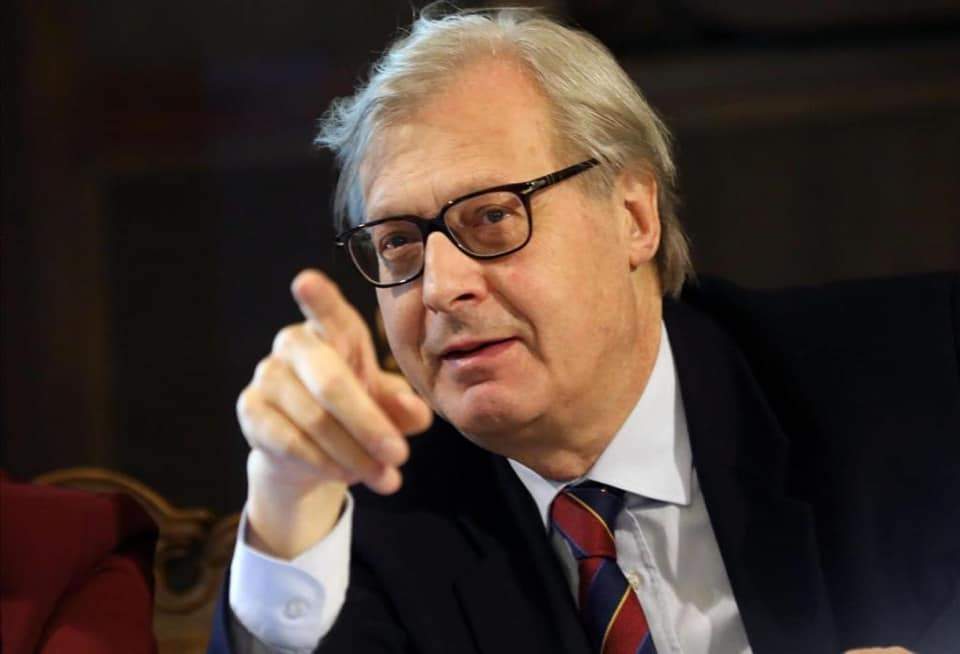Could Sgarbi get the museums reopened? Here's when the Lazio Regional Administrative Court will rule
Will Vittorio Sgarbi be the one to have the museums closed by the November 3 dpcm reopened? The judicial process of the appeal that the art historian has filed, as mayor of Sutri, at the Lazio Regional Administrative Court, and with which Sgarbi, represented by lawyer Carlo Rienzi, has asked for the suspension of the dpcm that imposed the closure of cultural venues throughout Italy in order to contain the Covid-19 contagion, is proceeding.
On what elements is the appeal filed on November 3 based? First, the text reads, the “violation and false application of Decree-Law No. 146 of September 20, 2015 converted, with amendments, by Law No. 182 of November 12, 2015,” i.e., the decree that made museums essential public services, ed. “If by Law No. 146 sought to resolve the issue of the right to strike in museums and other public places of culture,” the appeal reads, “the scope of the provision is much broader, as it tends to further enhance the cultural heritage as an asset that must be enjoyed, so that it can perform its function, which is to transmit testimonies of civilization and foster the development of culture. Neither more nor less than schools and universities of all levels. Therefore, the definition of a system of guarantees of minimum services, which must be ensured even in the presence of labor conflicts, is justified.” The essential public service, the appeal argues, “is that which the community cannot under any circumstances do without” (the reference is to a pronouncement of the Constitutional Court, 31 of 1969). There are cases in which the law provides for the suspension of essential public services, but according to lawyer Rienzi this would not be the case, since, “in the current historical context characterized by the coronavirus,” the appeal states, “it can and should be regulated, but never suspended. Alternatively, the same should have been regulated according to the division of areas (red, orange and yellow), assigned in relation to the degree of risk to which citizens are exposed. Consequently, the Decree in question, should have differentiated the way the service is used, based on the color assigned to each region.”
Among other things, the appeal continues, “among the essential public services, the management of museums and places of culture also appears to be the least complicated, given that the service can be ensured with contingent fruition, limited in the number of people taking into account the size and characteristics of the premises open to the public, with reservations, without assemblages and without any risk of contagion, with respect for the safety distance and the use of the mask, as will be better seen in the next ground of law.” It is then contested that the dpcm provides for the closures indiscriminately, that is, “without distinction of the size, cultural importance and possibility of compliance with security measures, and not even according to the color of the regions,” despite the fact that the Technical Scientific Committee for the coronavirus emergency established clear guidelines for the reopening of museums and places of culture to which all have complied (the examples of the Uffizi, the Pinacoteca di Brera, the Royal Museums of Turin, and the Museums of Sutri are given). The appeal then notes the “unequal treatment” with regard to television shows, which have not been suspended but “whose studio spaces in which they take place are notoriously smaller than those guaranteed in museums and where visitors, for the purposes of access, are divided into small groups, by time slots, subject to reservations.” Finally, the appeal also refers to the opening of initial classes in schools (“despite being very risky for contagions”), the fact that “assemblies in public transportation remain possible at 50 percent of capacity,” and the opening of hairdressing salons.
The Tar had ruled postponing the decision on the appeal until December 2. However, Codacons filed aformal petition for a hearing with Section I of the Lazio Regional Administrative Court asking the administrative court to hear Sgarbi in the appeal.
The hearing petition states that the issue of the closure of cultural sites is of “particular importance” and of "extreme delicacy.“ the lockout, in fact, ”affects culture, which, especially at the time of the coronavirus and in the face of the fragilities caused by the pandemic, can offer space for resilience, thus the ability to cope with adversity, finding new impulses, new inspirations, new physical, mental and spiritual energies, not for nothing considered as an essential service. Incidentally (it should be pointed out) while museums remain unreasonably closed, even though they are places where, more than any other, all necessary precautions can be observed, bookstores, art galleries, commercial establishments and large sales centers are open [....] reason why we want to ensure the completeness of the preliminary investigation, prior to the adoption of the precautionary measure, allowing the Hon. Vittorio Sgarbi, both as a plaintiff and as an expert, to represent elements and data relevant to the decision."
Therefore, the Tar might decide to hear Sgarbi before the date set for the ruling: in any case, before the expiration of the November 3 dpcm (which will take effect until December 3) we will know whether it will be the administrative justice to have the museums reopened.
 |
| Could Sgarbi get the museums reopened? Here's when the Lazio Regional Administrative Court will rule |
Warning: the translation into English of the original Italian article was created using automatic tools. We undertake to review all articles, but we do not guarantee the total absence of inaccuracies in the translation due to the program. You can find the original by clicking on the ITA button. If you find any mistake,please contact us.





























